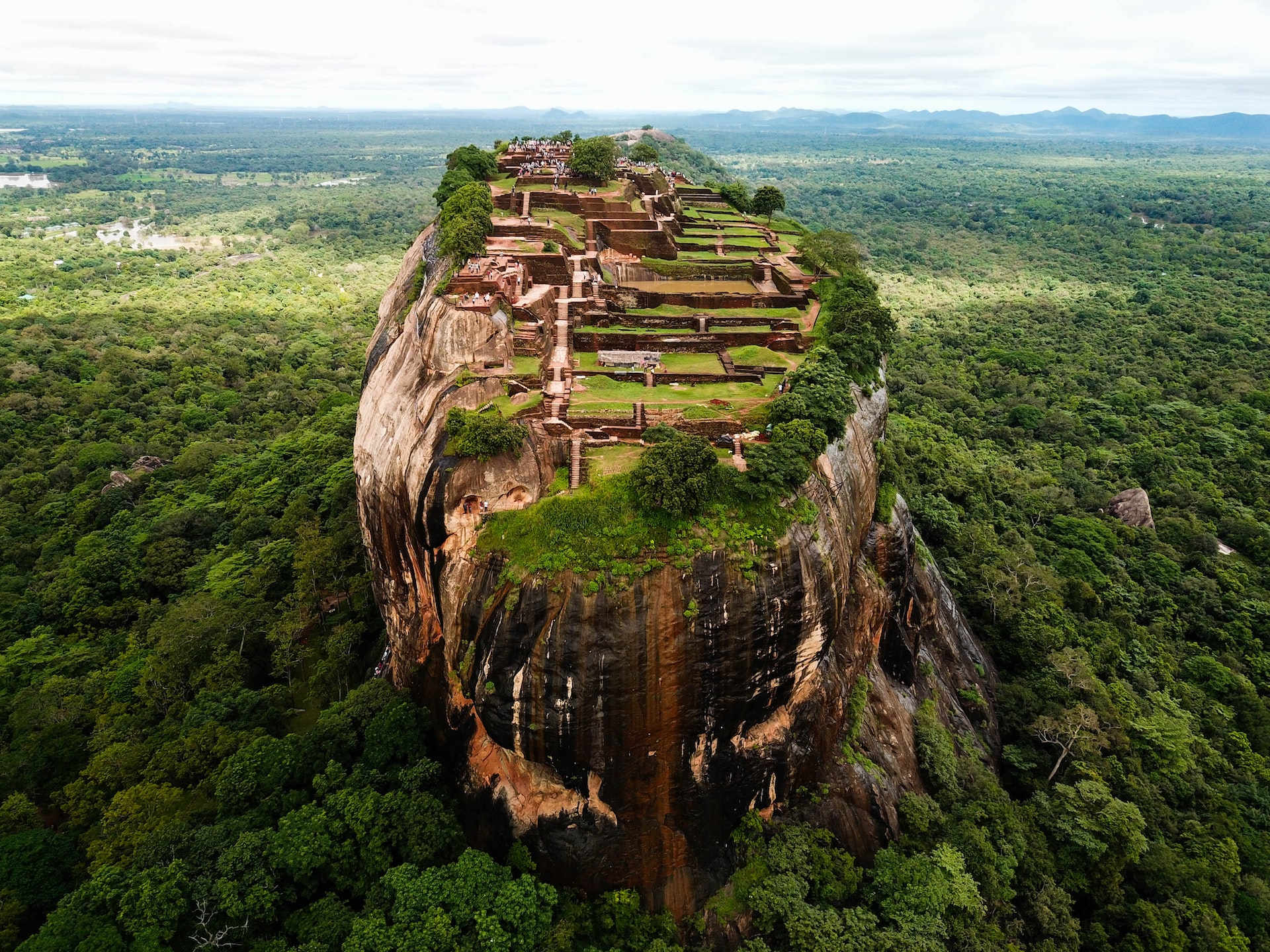Are you searching for a destination that will take you back in time to the grandeur of ancient Sri Lanka? Look no further than Sigiriya, the rock fortress that boasts a design so innovative and stunning that it has earned its place among the most legendary wonders of the world.
Nestled in the district of Matale, the 180-meter tall rock fortress which has rightly earned the UNESCO World Heritage Site status, is truly an architectural masterpiece! The eighth wonder of the world, as the locals call it, is by far the most beloved iconic local landmark in Sri Lanka. So, let’s explore the magic of Sigiriya and discover why it is the perfect adventure for travellers looking to step into the rich history of Sri Lanka.
The Legend of Sigiriya’s Past
Step back in time to the 5th century AD, a time when kings and their kingdoms fought for power and amidst the chaos, Kasyapa emerged as the ruler of Sri Lanka. However, Kasyapa had a tumultuous relationship with his brother Moggallana, the rightful heir to the throne. To protect himself, Kasyapa sought to build a fortress that would not only secure his position, but also be a masterpiece of architectural and engineering design. And so, Sigiriya, ‘Sinhagiri’ as the locals call it or ‘Lion Rock,’ was designed. It took seven years of hard work to complete and Kasyapa’s new capital city was built atop the rock.
After Kasyapa’s death, Sigiriya was abandoned and transformed into a Buddhist monastery that lasted till the 14th century. The fortress was eventually forgotten for centuries until British archaeologists rediscovered it in the 19th century. Today, it stands as a testimony to ancient Sri Lankan civilisation and it continues to attract visitors from around the world.
The Marvellous Architecture of Sigiriya
Sigiriya’s architecture is a wonder itself, with a breathtaking design preserved for over 1,500 years. It is a fortress built atop a mammoth rock and to reach the summit, you have to climb a series of steps, 1200 in total and go through walkways that hug the rock face. The view from the top is awe-inspiring, with ruins of the palace, the throne room and the royal bath that transports you back to ancient Sri Lanka. The palace was designed to look like a giant lion, complete with Lion’s Gate, its entrance. Even though only the giant lion’s paws remain at the entrance now, it is still an impressive feat of architectural design.

Sigiriya | Sri Lanka
The Enchanting Sigiriya Frescoes
One of Sigiriya’s most captivating features is the Sigiriya Frescoes, a series of ancient paintings that adorn the rock face. The paintings depict a group of women, who are thought to be King Kasyapa’s concubines or perhaps even celestial nymphs. Despite being more than a thousand years old, the paintings remain perfectly preserved, and they are some of the most extraordinary examples of ancient Sri Lankan art.
The Extraordinary Mirror Wall
Mirror Wall, yet another magnificent feature in Sigiriya, is definitely worth exploring too. The perfectly polished brick wall once plastered with bees honey, lime and egg whites, features poems written by ancient visitors, the only poetry found from the Anuradhapura era in praise of the frescoes and the beauty surrounding the rock.
Immaculate Landscaped Gardens
The perfectly preserved beautifully landscaped gardens are not to be forgotten. They are impressive interconnected gardens with a complex system of channels and pools that were once used for irrigation and recreation. The gardens feature boulder gardens, water gardens, palace gardens and terrace gardens, which have helped to protect the city from invaders. These gardens were designed to be a source of tranquillity and calmness for the residents of the city and they still provide a peaceful respite for visitors today. Water gardens are the most impressive with fountains still functioning. It is worthwhile to explore these stunning inventions, some of the oldest well preserved gardens in South Asia.
Discovering Sigiriya for Yourself
If you are planning to visit Sigiriya, there are a few things you should keep in mind to ensure your trip is both comfortable and respectful.
The best time to visit is either early in the morning or late in the afternoon, when the temperature is cooler and the crowds are lighter. Wear comfortable shoes, since the climb up the rock with 1200 steps can be quite challenging, especially for those with mobility issues. It is a bit of a strenuous climb to the top, so take your time and enjoy the stunning views, as the climb to the top is totally worth it.
You should also dress modestly, as this is a religious site, and it’s important to show respect to the local customs and traditions. Cover your shoulders and knees, and avoid wearing tight-fitting clothing.
Arriving
When you arrive at the site, there is a ticket office where you can purchase your entrance ticket. It is best to arrive early as possible to avoid the crowds, and you should plan on spending several hours exploring the site. To be honest, you can ideally spend half of the day here. There are informative sign boards placed at various locations, which will provide you with historical and architectural information, so take your time to read them along the way as you take the climb.
For an even more immersive experience, consider hiring a local guide. A knowledgeable guide can offer you insights into the historical and cultural significance of the site and can provide you with an even greater inspiration for Sigiriya.
Sigiriya is a destination that should be on every traveller’s list to Sri Lanka. It is a wonder of ancient architecture and engineering and it is a testament to the grandeur of Sri Lanka’s past. With its jaw-dropping views, captivating frescoes and peaceful water gardens, Sigiriya is an experience that will leave you with memories to last a lifetime. So pack your bags, book your flight, and get ready to immerse yourself in the magic of Sigiriya, the eighth wonder of the world.
Thank you for reading our article about Sigiriya, Sri Lanka



